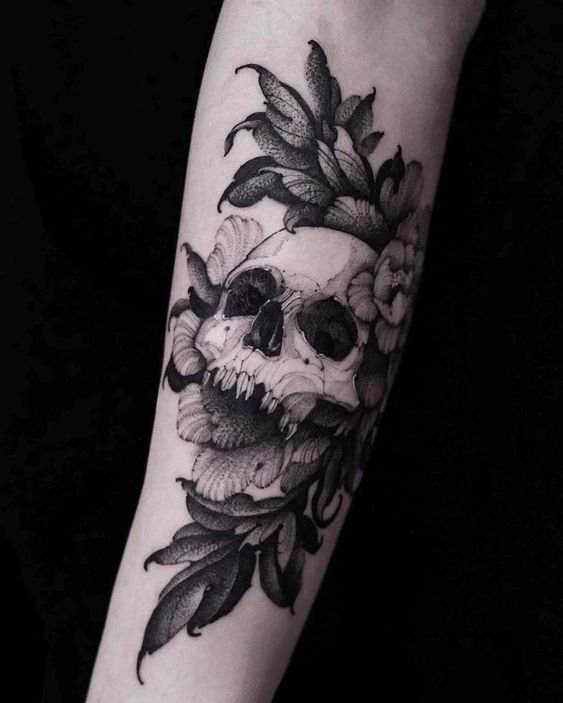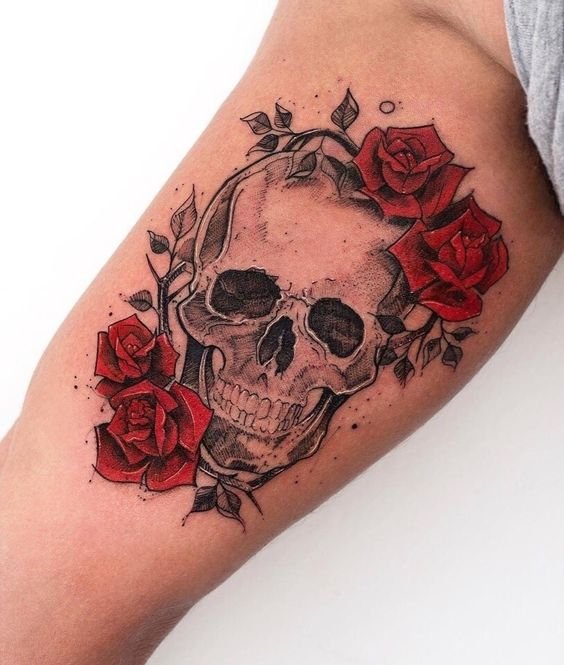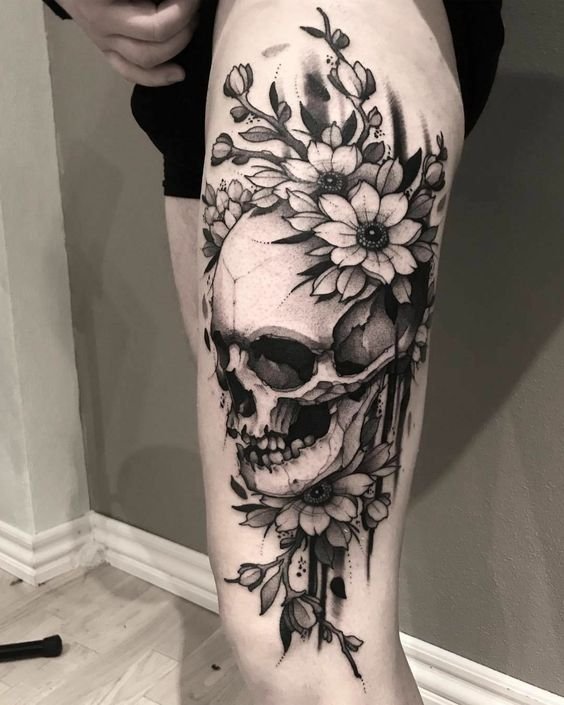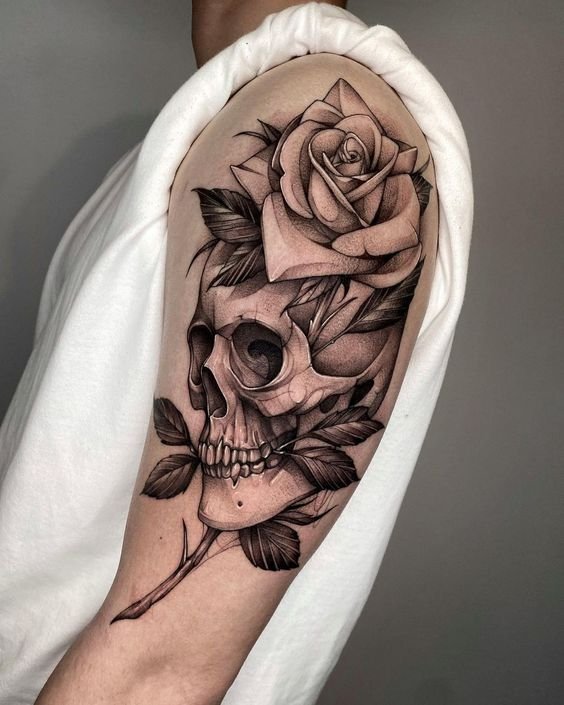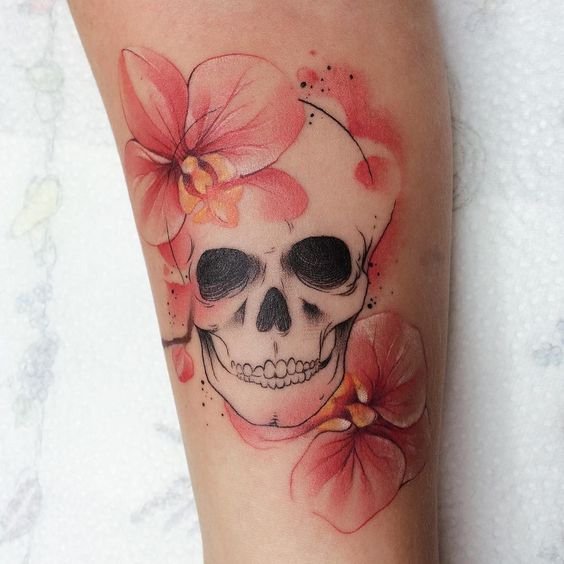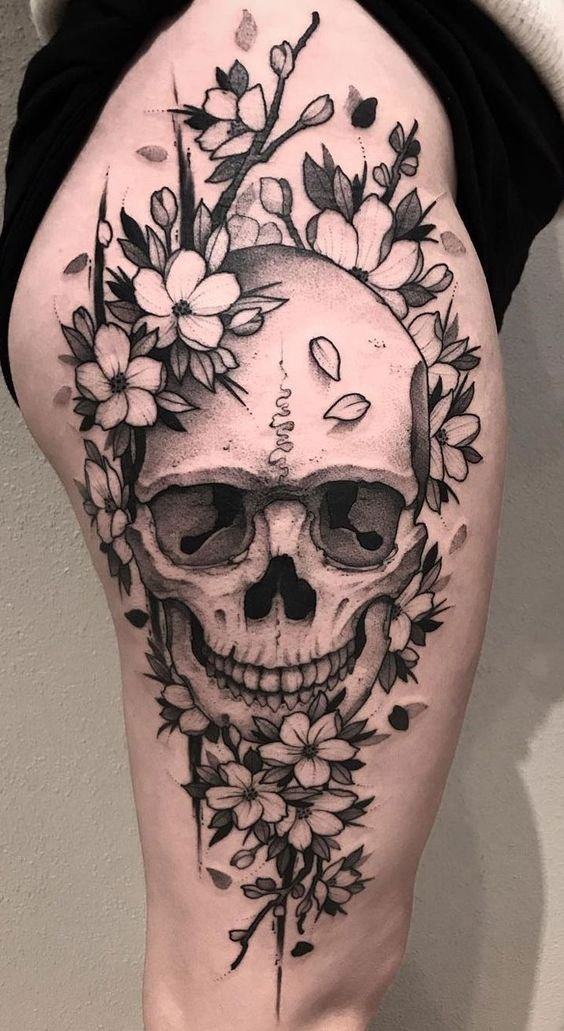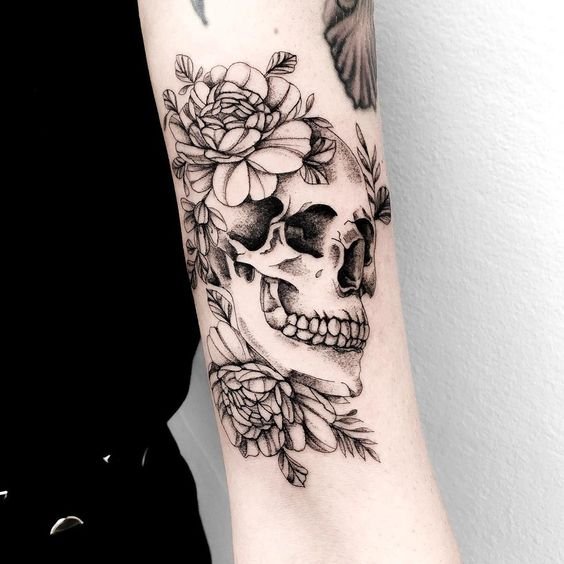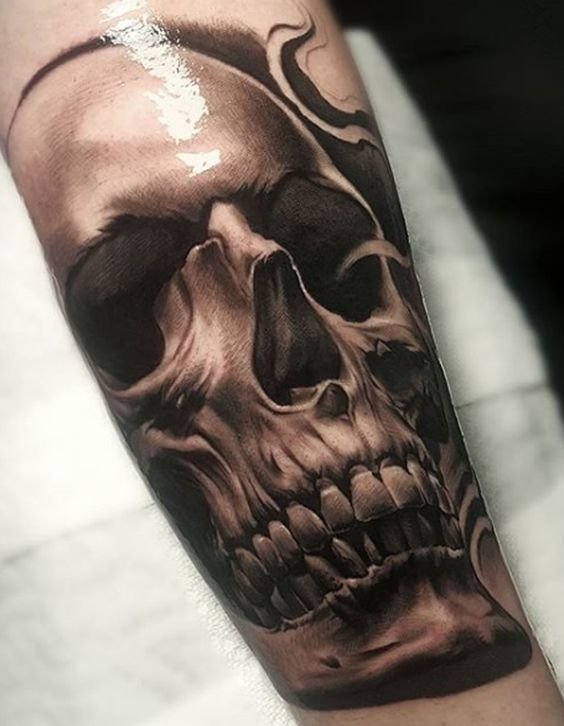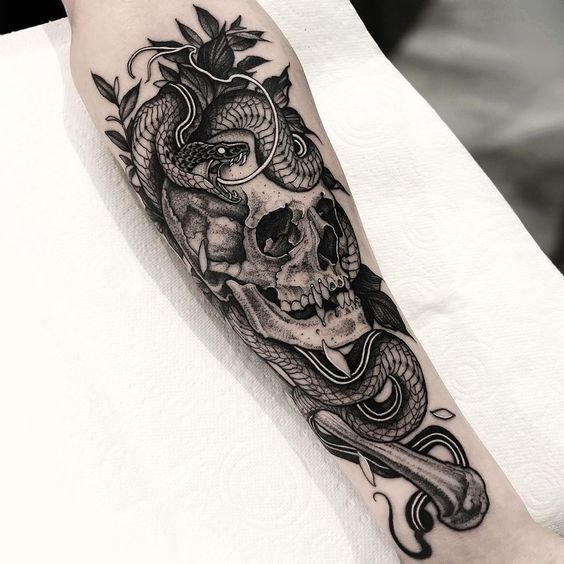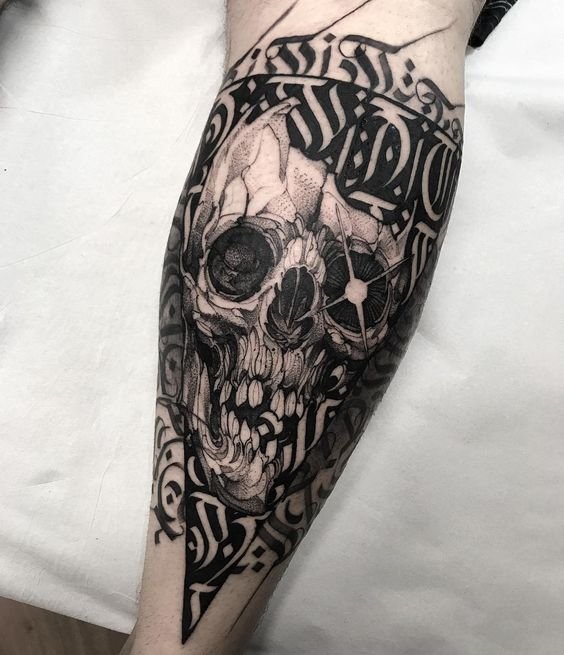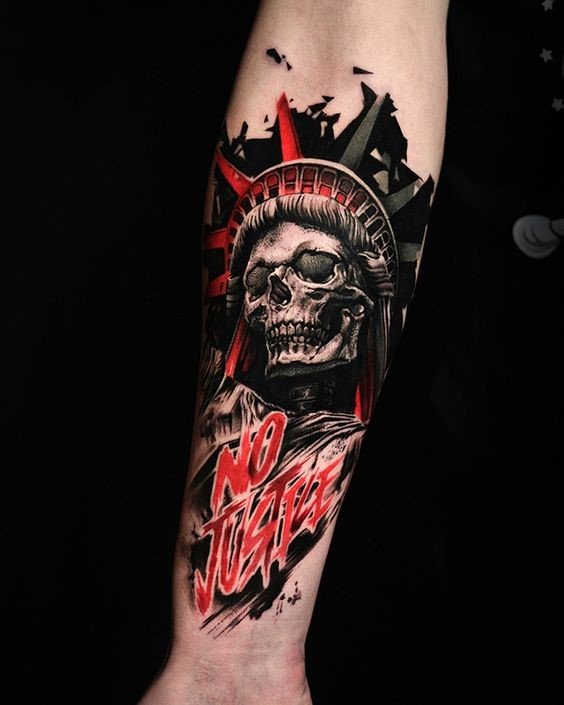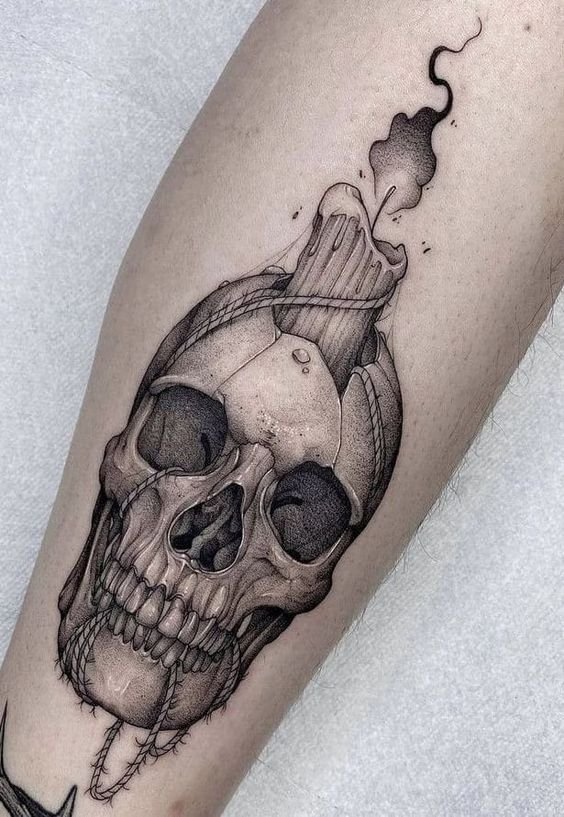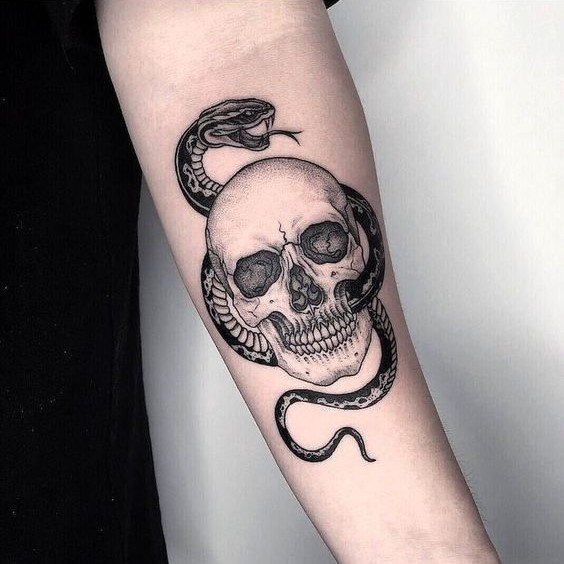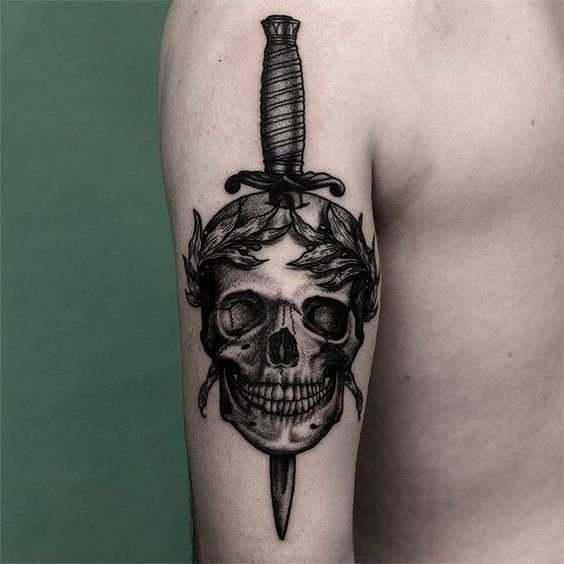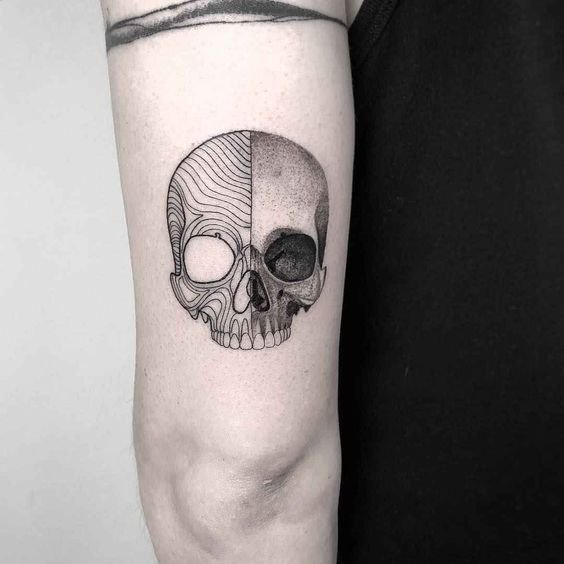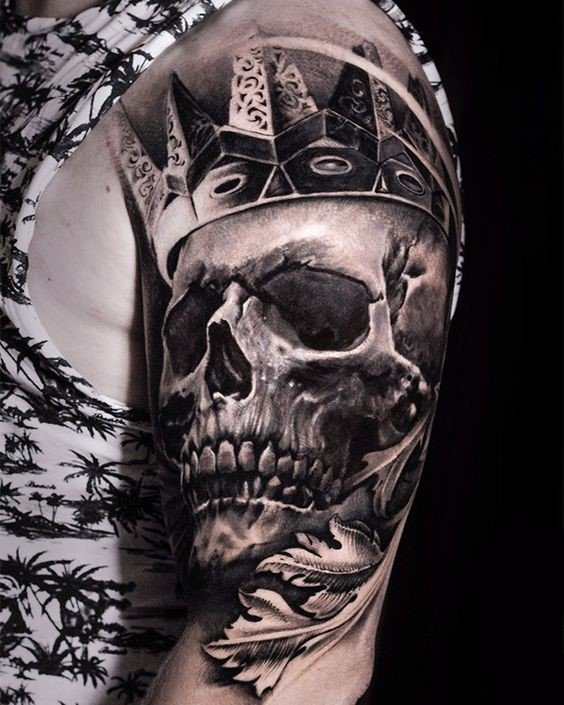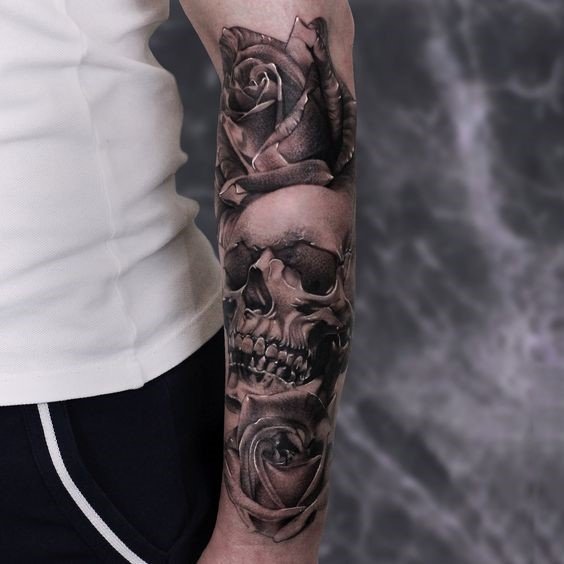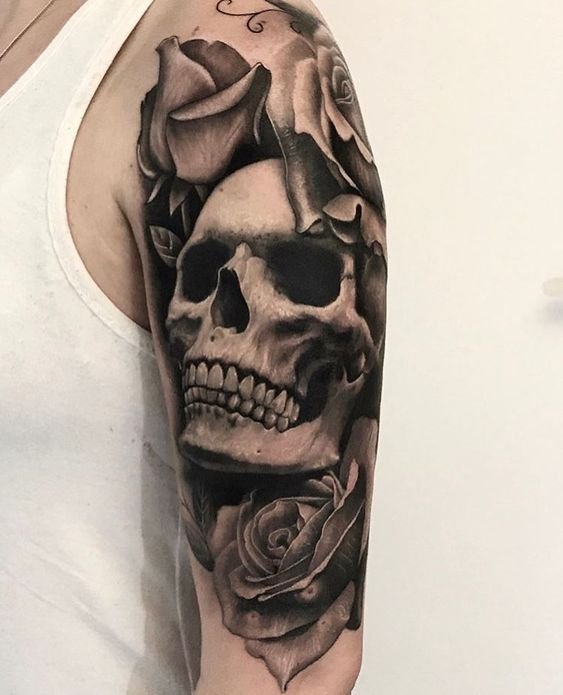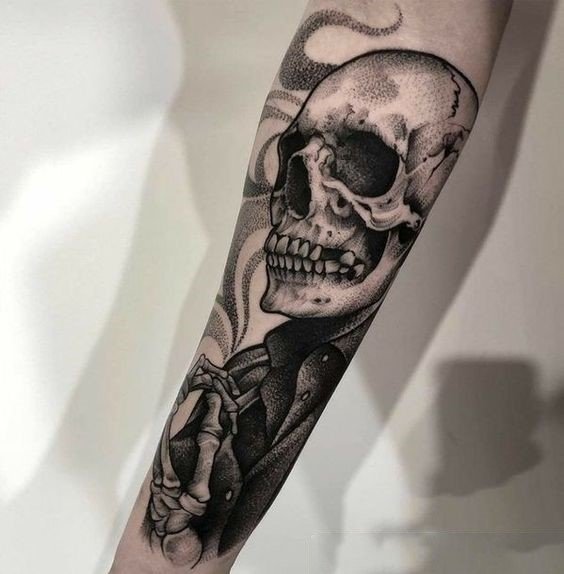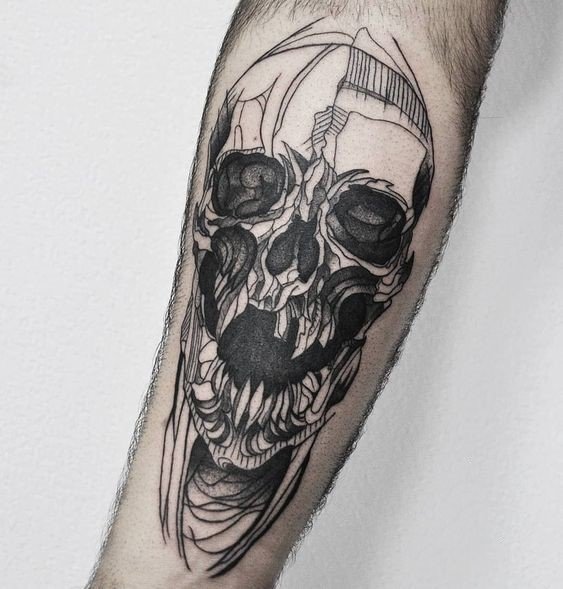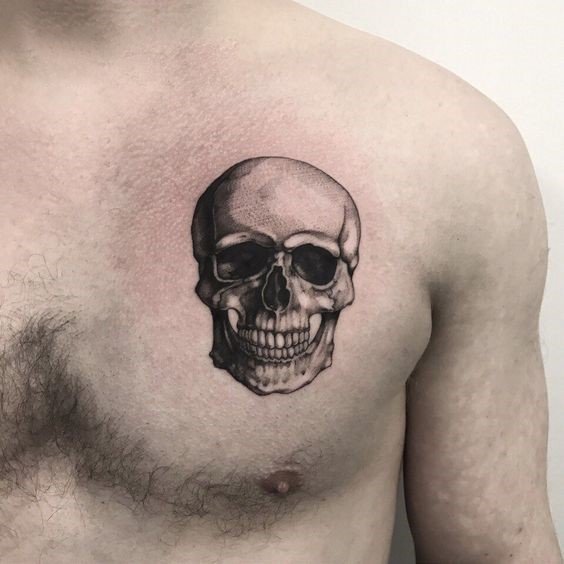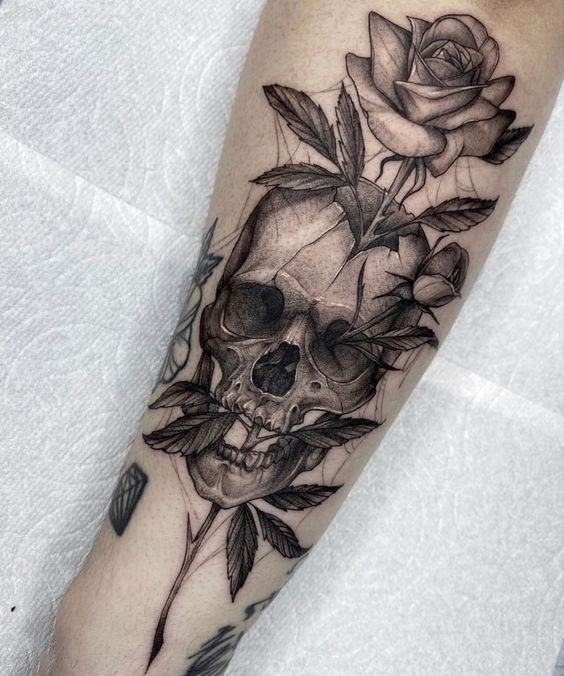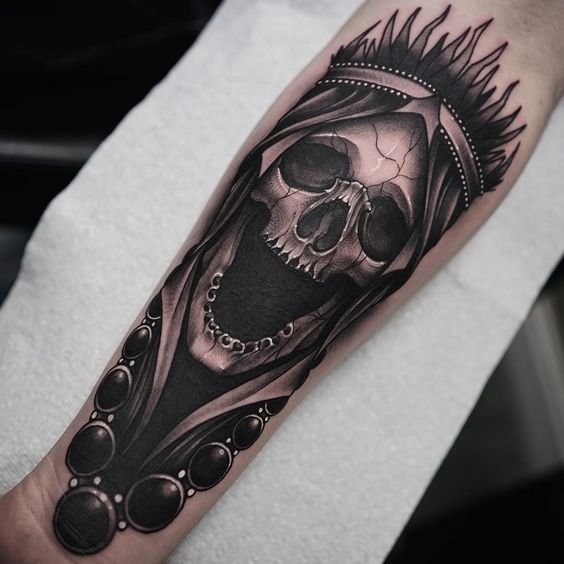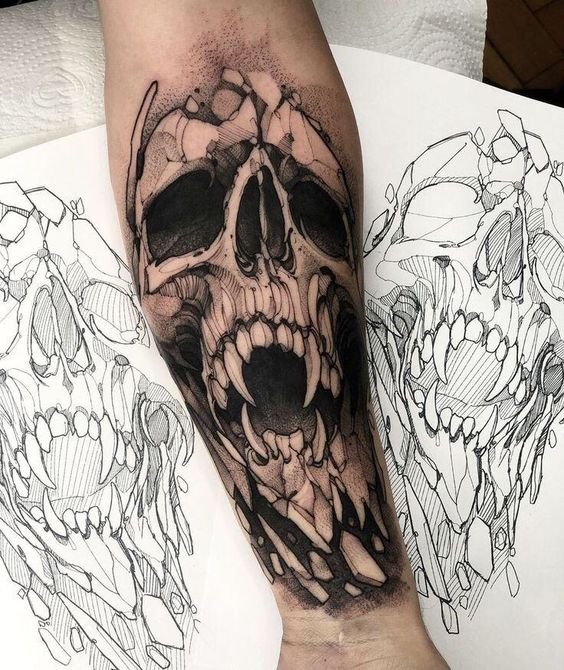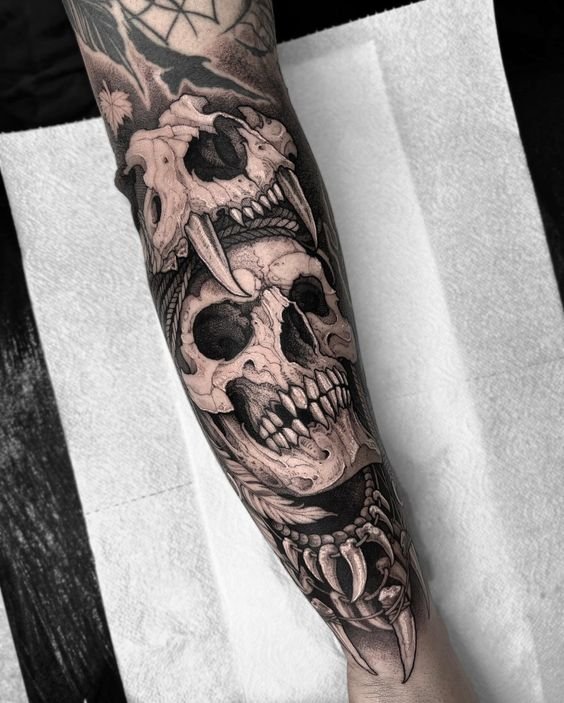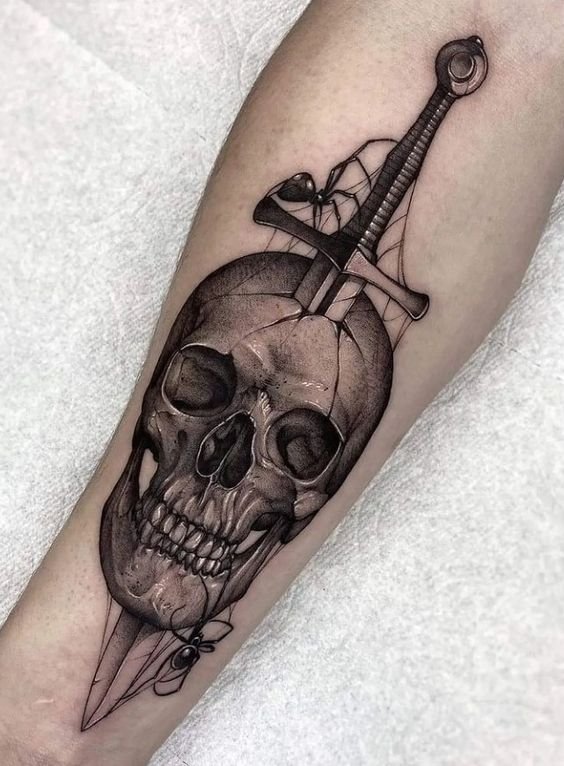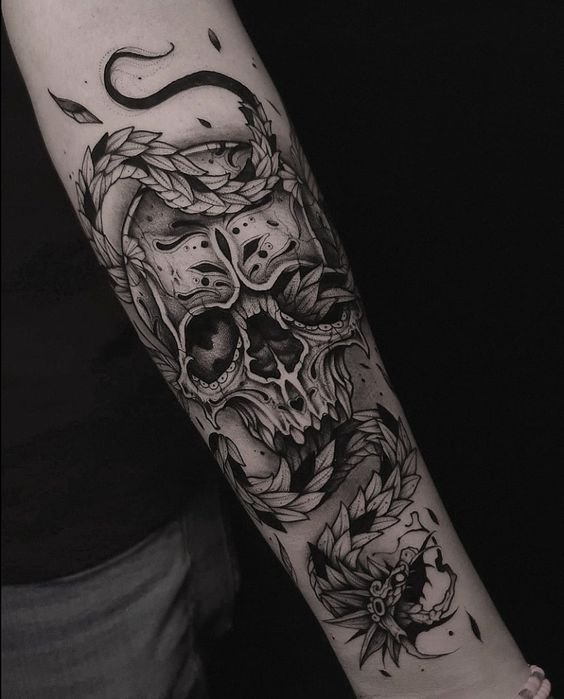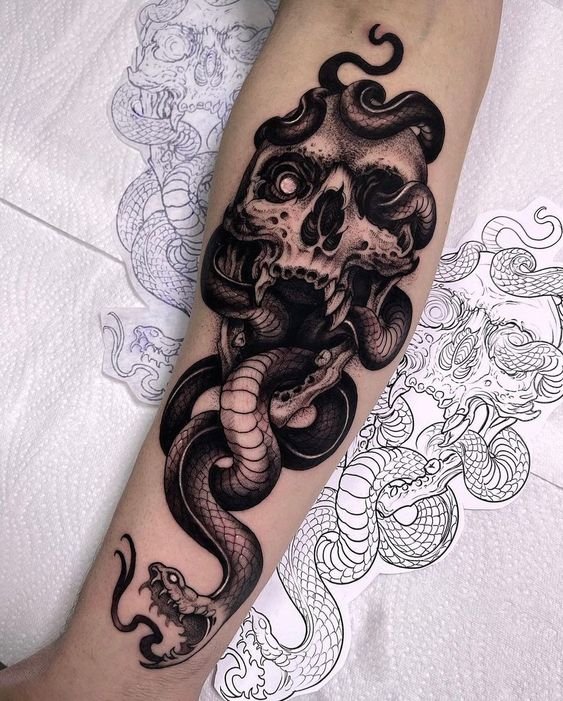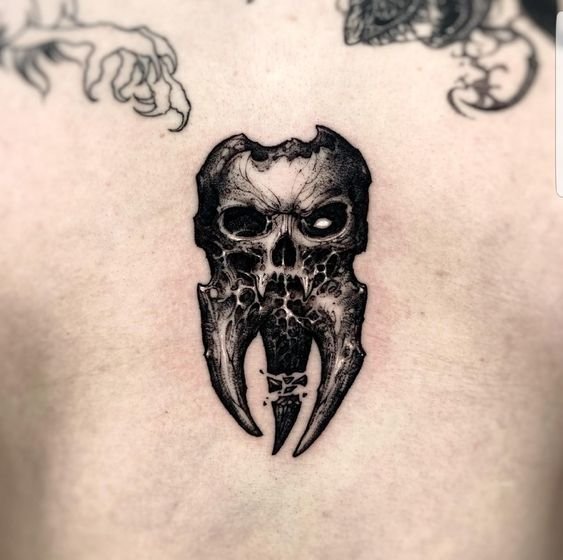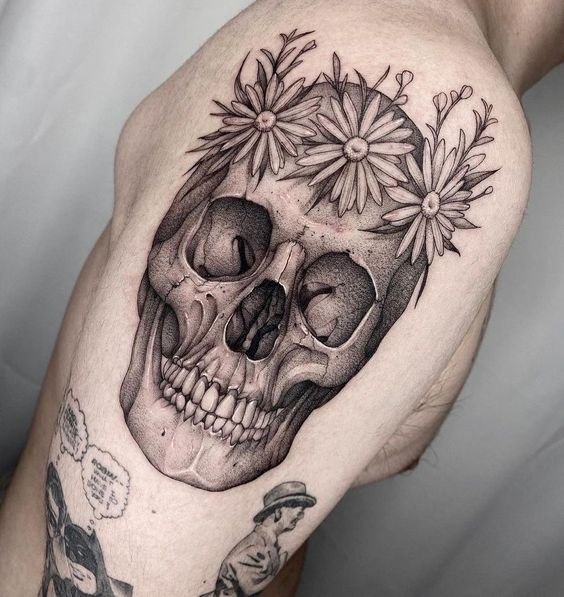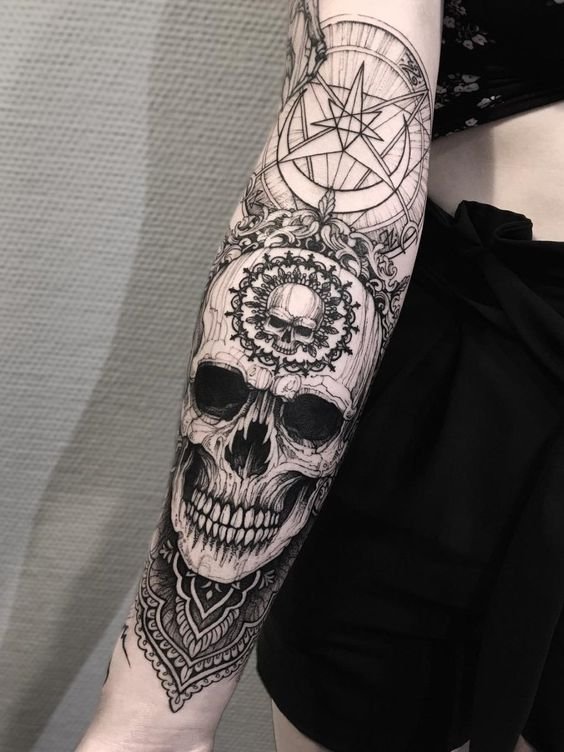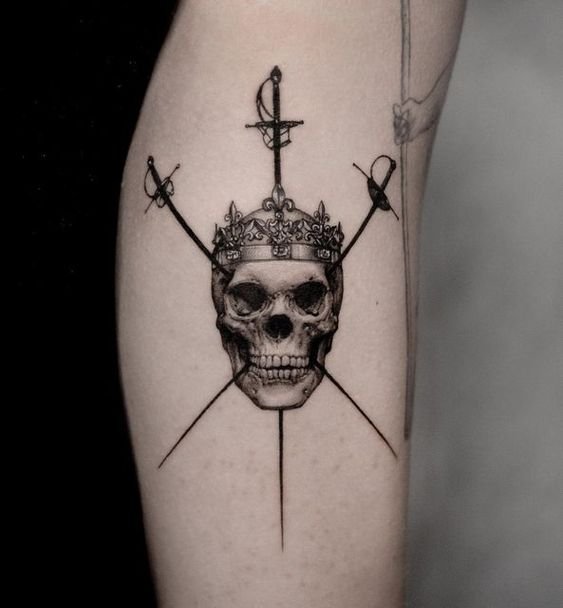Tattoo skull
The skull is a special symbol.
It united different cultures and attracted the attention of people for a long time. It has dual meaning and represents death and immortality. The skull evokes philosophical reflection and interpretation.
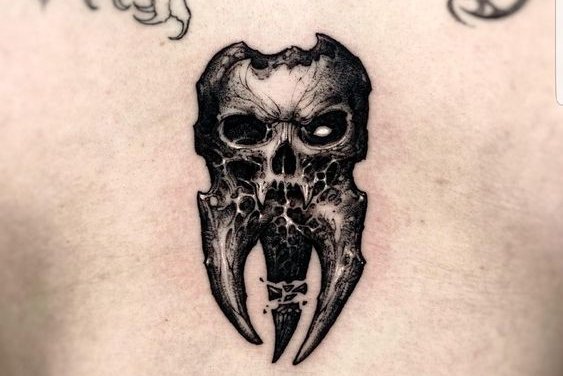
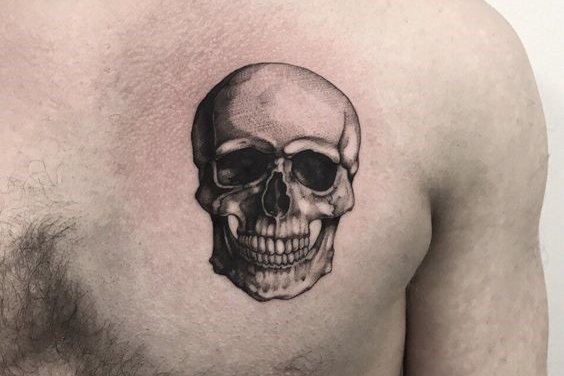
What does the human
skull represent?
The symbolism of the skull has always been concerned with questions about life and death, as well as immortality. It is both a symbol of death and a symbol of resistance.
Skull is resistant to decay and smalder, symbolizes vitality and strength.
In ancient Rome, the skull with bones was used during the triumphal victory processions of warriors, expressing victory over death. The Latin phrase "Memento mori" ("Remember that you are mortal") accompanied it and is still used in our culture.
For different primitive tribes, the skull was seen as the home of the soul. The heads of the defeated enemies were not buried with the bodies, but displayed in high places in their homes to show that they belonged to the family and were protected from harm.
In some cultures, the skulls of defeated enemies were colored bright so that they did not feel "offended".
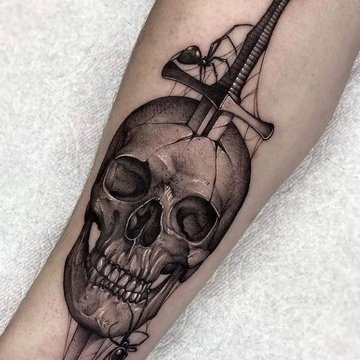
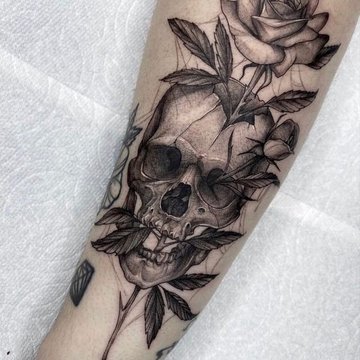

Celts, for example, considered the skull to be the center of a sacred force providing:
- protection;
- health;
- wealth.
The Celts tribes believed that the secret energy contained in the human mind persisted after death. It could serve the victor. As a symbol of this belief, skulls were often decorated with gold or silver and turned into drinking vessels.
The skull was also used in predictive rituals. In Norse mythology, the god Odin carried with him the head of Mimir, who gave him prophetic tidings from other worlds. In myths and legends there is a belief that the skull has the power of a deceased person.


All these aspects of the skull symbolism reflect the importance of the questions of death, immortality and life in the history of mankind.
The skull, as a symbol with a dual meaning, continues to inspire our philosophical reflections on:
- meaning of life and death;
- our own vulnerability;
- the transient nature of existence.
It reminds us of the necessity to value and use our time on the Earth with wisdom and awareness of finiteness.
The symbolism of the skull also reflects the transcendent acpec of human nature associated with spirituality. The skull was believed to be the repository of the soul, and the possession of another person’s skull symbolized the presence of both souls and the bringing of victory in extreme situations.
This symbol can also inspire us to reflect on the value of life and how we use our time on earth. He remembers that every moment is valuable and should be used with awareness and prudence.
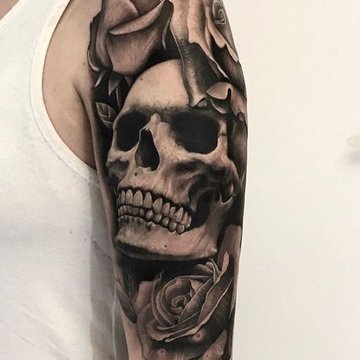
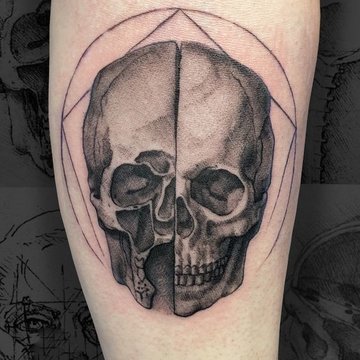
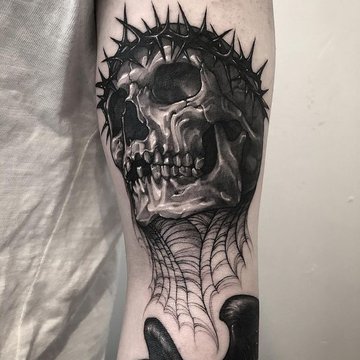
Features of a skull tattoo
Skull tattoo sketches are one of the most popular and symbolic variations among tattoo fans.
The skull, as a symbol of death and memento mori, carries a profound meaning and has different interpretations in different cultures and traditions.
Skull tattoo sketches can be performed in different shapes and styles. Some prefer classical skull representations that are realistic and detailed, while others prefer abstract or stylized variants. A variety of styles, including traditional, new school, realism, graphic and many others, allows everyone to find a unique and individual design.
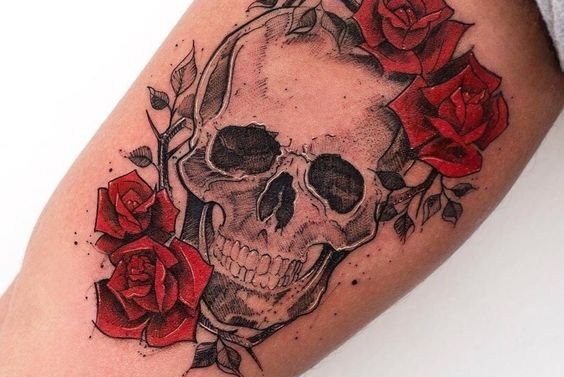
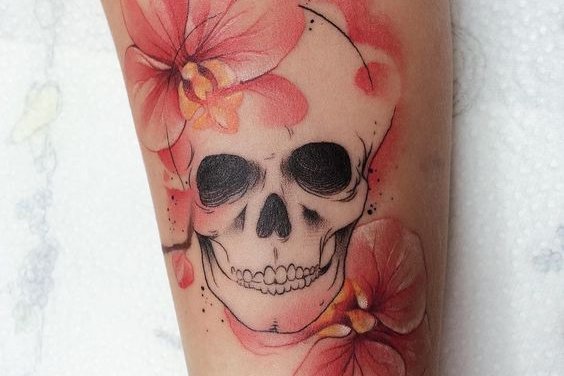
Skulls can be depicted in combination with various elements to enhance their symbolic value.
Roses, cobwebs, watches, butterflies, birds, flames are just some of the many possible additions that give the skull tattoo sketches their own meaning and aesthetics. Each element can add depth and context to the skull’s image, creating a unique plot and personal story.
The symbolism of the skull may vary depending on the interpretation. For some people, the skull tattoo is a reminder of the mortality and value of every moment of life. The tattoo can symbolize accepting death as a natural part of the life cycle and opening up new possibilities as a result of this awareness.
The skull is also a symbol of strength and protection. He may be a guardian who protects against external threats and warns against potential dangers. In this context, the skull may be decorated with additional elements such as spikes, helmets, or weapons that emphasize its militant and protective nature.
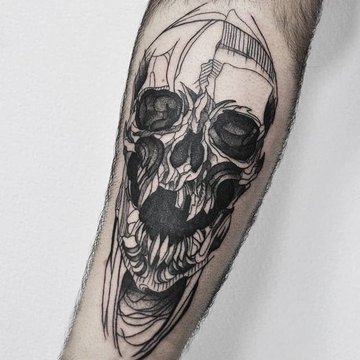

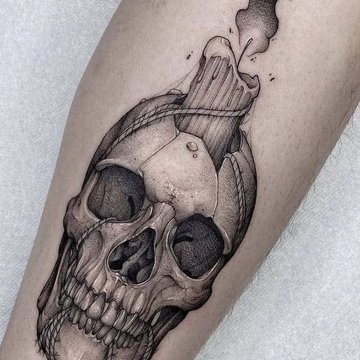
What is the best place
to get a skull tattoo?
The location of the skull tattoo may also vary depending on each person’s preferences and wishes.
Some choose visible places such as the forearm, shoulder or chest to make the tattoo more visible and spectacular. Others prefer more hidden places such as the back, ribs or thighs to make the tattoo more personal and intimate.


 Create a sketch in the VEAN TATTOO AI generator
Create a sketch in the VEAN TATTOO AI generator
